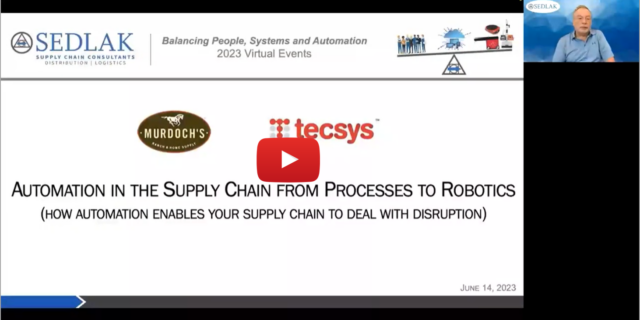Is Your Healthcare Supply Chain Network Ready to Adapt?
February 25, 2014 By: Senior Management | Topics: Healthcare, Network StrategyConsidering the rapidly evolving dynamics of the healthcare industry today, is there ever a bad time to re-analyze distribution networks? It seems evident that everything is changing – customer profiles, number and size of suppliers, product characteristics, service requirements, transportation needs, etc. Might it be safe to say that the constant in healthcare’s foreseeable future is change? As a result, the ability to quickly and efficiently perform a supply chain network “optimization” analysis is becoming increasingly relevant. In addition, factors like agility/adaptability and risk management within the evaluation of supply chain network scenarios are carrying more and more weight.
In the old days, players in the healthcare value chain didn’t pay much attention to their supply chain networks – the overall costs of distribution were such a small percentage of sales they just didn’t make the radar screen. Often times, suppliers competed mostly on “product leadership” while supply chain processes took the back seat. In many healthcare segments, it was a given that wholesalers provided the distribution time and place “utility.” Supply chain processes and networks were little more than a “cost of business.” As a result, most healthcare companies analyzed their supply chain networks infrequently. And when they did, it was a challenging task that required expensive, complex tools that were difficult to use and understand, loads of IT support to obtain the required data, and patience – lots and lots of patience.
An executive for a pharmaceutical company I worked for once told me, “If you want to have a career in pharmaceuticals, get into manufacturing or R&D, nothing exciting will ever happen in logistics and supply chain.” In many ways, that was good advice at the time. But what was true 25 years ago is very different from the realities of today. Plenty of exciting improvement activities are happening in logistics and supply chain across the entire healthcare footprint. The time and energy invested to continuously improve inventory, transportation, fill-rate and delivery processes, for example, is under-utilized if the underlying supply chain network is suboptimal.
Developing a Network Design Rhythm
As the pace and magnitude of change increases, so does the need to re-analyze supply chain networks. Luckily the data, computing power, optimization/simulation tools and expertise to perform these analyses exist today like never before. These factors allow companies to analyze networks from their supplier’s supplier to their customer’s customer, dramatically expanding the opportunities for efficiencies and agility, advancing knowledge of network risk management and providing valuable insights for trading partner collaboration.
Let’s be practical. Doesn’t it make sense to offset increasing complexity with some supply chain network stability? The answer to that question lies within the strategic directions of each company. No matter what that direction, however, creating a rhythm of analysis to investigate opportunities for continuous improvement provides insight and information for better strategic decision-making.
A couple of years ago, research published by Gartner suggested a 1- to 5-year horizon for network modeling. That’s quite a range. But depending on the rate of change a particular organization is facing, re-analyzing the entire supply chain network every 2 to 3 years is certainly not unreasonable to consider. This doesn’t mean that distribution centers, manufacturing sites or transportation approaches should change that often. It does, however, suggest that enough analysis be done to prepare an organization, and potentially its trading partners, for change and adaptability. With this mindset, supply chain processes become more strategic.
Since the data availability, tools and processes can accommodate it, smaller scale analyses can be performed in more frequent intervals, allowing for smarter, more informed decisions to be made as more tactical processes change. In essence, supply chain design can become strategic, tactical and operational, preparing for the long term and analyzing major network changes even before they occur.
Supporting Supply Chain Risk Management
Even with significant concerns about a broad spectrum of risks across the supply chain, research by the CELDi Biopharmaceutical Operations Initiative (BOI) states that, “…there is relatively little focus in the industry on detailed analysis of relevant data, relatively little formal quantification of risk, little formal modeling and simulation of risk or risk mitigation strategies, little focus on inventory optimization, and little measurement of uncertainty.”
Many supply chain risks are relatively easy to simulate and quantify within common network analysis activities. What if a company loses the use of a manufacturing site due to a contamination issue? What if an important air freight lane is affected by a volcanic eruption? What if the recall of a competitor’s product causes significant demand spikes? All these “what if” scenarios hit the sweet spot of network modeling and analysis.
Who can Best Perform Supply Chain Network Analyses?
A lot of organizations can support supply chain network analyses. Who is best suited depends on strategic intent. A transportation or 3PL provider might make sense to support the analyses if the intent is to partner more tightly with that provider, leading to solutions that best utilize their assets and services. Software tools providers might make sense if the intent is to buy more software. Of course, as a consultant, I am biased toward the unbiased approach of an independent consulting firm that is not beholden to particular assets or logistics services, particular software or particular distribution solutions. An independent consulting firm like Sedlak offers the help that helps their clients, not the help that helps someone else.
For over 55 years Sedlak has been helping our clients advance their competitive edge through innovative logistics and distribution solutions. We hope you that you will find these insights to be helpful to your business. If there is any way we can be of assistance with your supply chain and logistics strategy, please feel free to contact us by filling out the form below.





